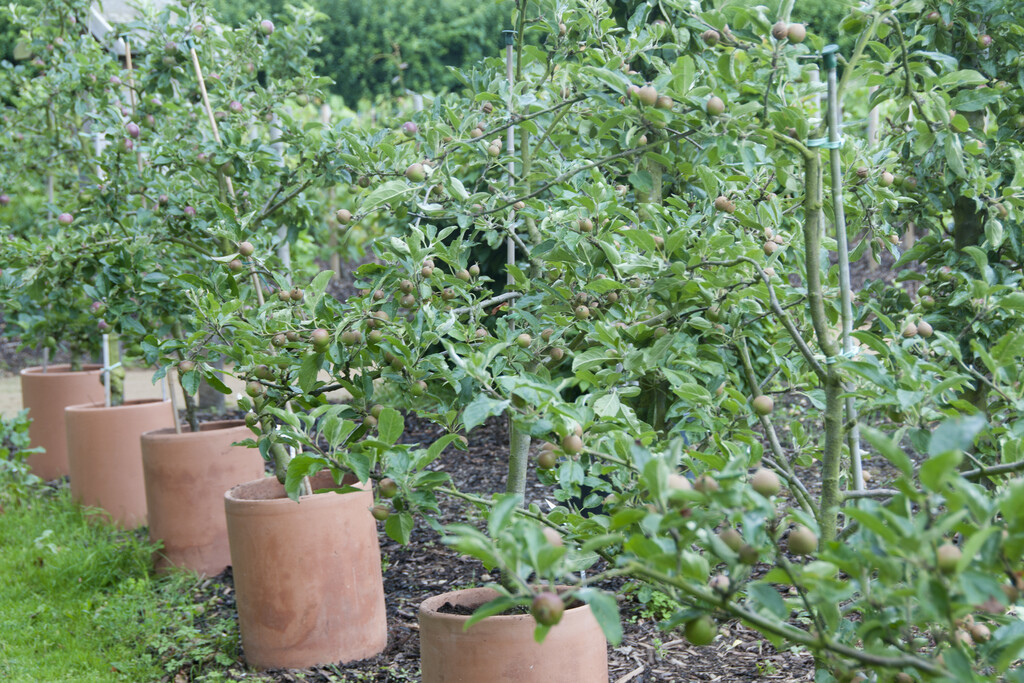Malus domestica 'Red Windsor' (D)

apple 'Red Windsor'
A dessert cultivar perfect for smaller gardens; heavy crops of deep red fruits, ready to eat in September, which keep for up to a month. Crisp juicy flesh with aromatic flavour. Happy grown in a large pot; good resistance to many common diseases. Flowers have some frost resistance at blossom time. Pollination Group 2; partially self-fertile
Size
Ultimate height
1.5–2.5 metresTime to ultimate height
5–10 yearsUltimate spread
1.5–2.5 metresGrowing conditions
Moisture
Moist but well–drained, Well–drainedpH
NeutralColour & scent
| Stem | Flower | Foliage | Fruit | |
| Spring | Green | |||
|---|---|---|---|---|
| Summer | Pink White | Green | ||
| Autumn | Red | |||
| Winter |
Position
- Full sun
Aspect
South–facing or East–facing or West–facing
Exposure
Sheltered Hardiness
H6Botanical details
- Family
- Rosaceae
- Native to GB / Ireland
- No
- Foliage
- Deciduous
- Habit
- Columnar upright
- Genus
Malus are small to medium-sized deciduous trees with showy flowers in spring and ornamental or edible fruit in autumn; some have good autumn foliage colour
- Name status
Unresolved
- Horticultural Group
- Dessert apples are sweet and juicy and are best eaten fresh and raw
How to grow
Cultivation
It will crop best in a sunny situation. Prefers a warm climate and good soil conditions. The height will depend on the rootstock and training method. Suitable for all training forms, including espalier and fan-trained. Keep a clear area around the trunk of at least 60cm radius. Fruit thinning may be required. For more details see apple cultivation
Propagation
Propagate by grafting in midwinter or chip budding in late summer on clonal rootstock for fruit. The rootstock will largely determine the vigour of the tree. Fruit grown from pips will not resemble the parent
Suggested planting locations and garden types
- City and courtyard gardens
- Patio and container plants
- Wildlife gardens
- Wall side borders
- Edible fruit
Pruning
Prune according to chosen training method. See apple pruning
Pests
May be susceptible to aphids, woolly aphid, rosy apple aphid, fruit tree red spider mite, mussel scale, codling moth and caterpillars are the main pests on edible apples
Diseases
May be susceptible to apple canker, apple scab, blossom wilt, brown rot, fireblight, honey fungus and powdery mildews
Get involved
The Royal Horticultural Society is the UK’s leading gardening charity. We aim to enrich everyone’s life through plants, and make the UK a greener and more beautiful place.
